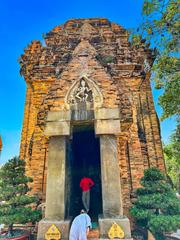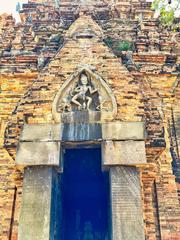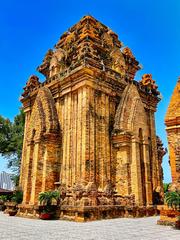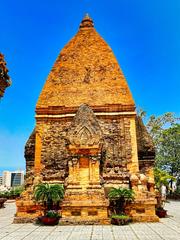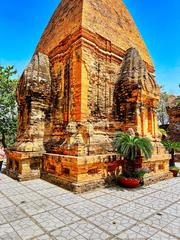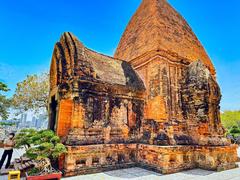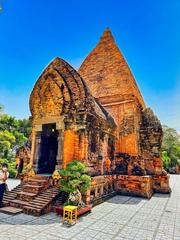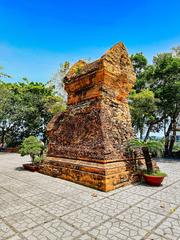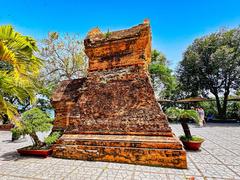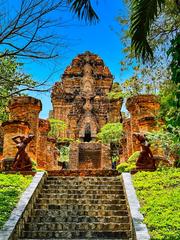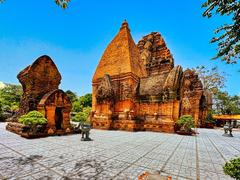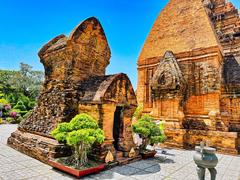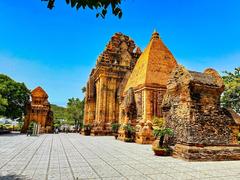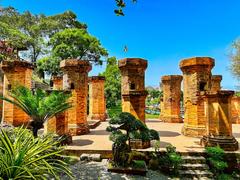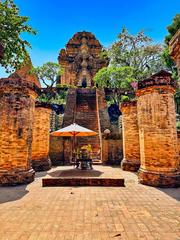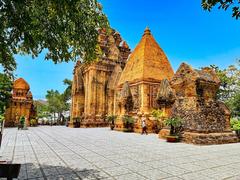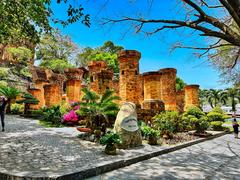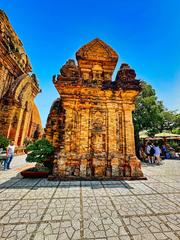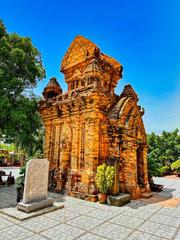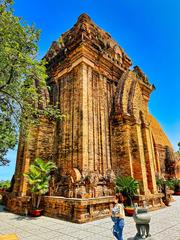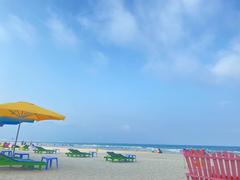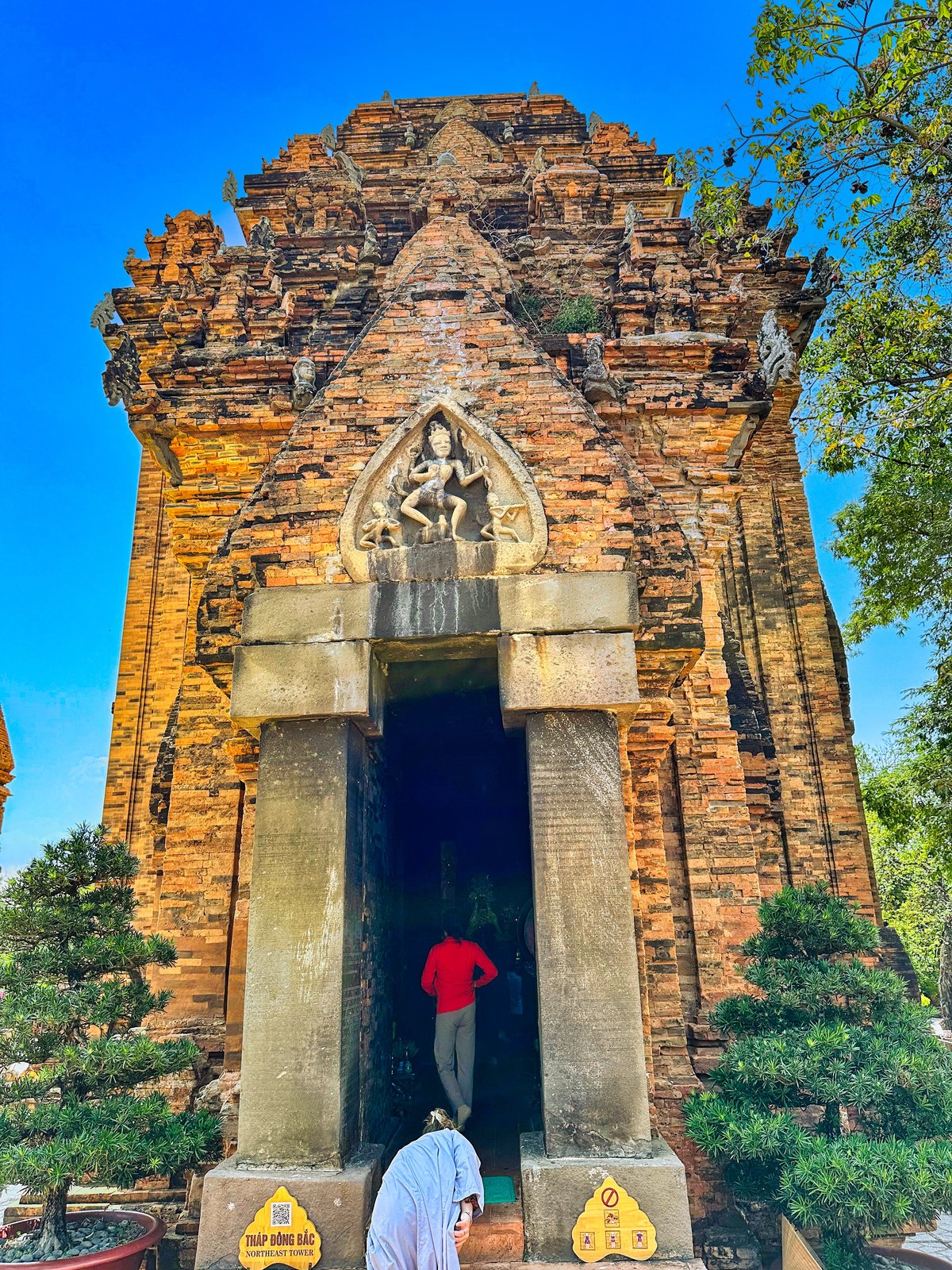
Po Nagar Visiting Hours, Tickets, and Guide to Nha Trang Historical Sites
Date: 14/06/2025
Introduction to Po Nagar and Its Significance
Po Nagar Cham Towers is a renowned historical and spiritual site in Nha Trang, Vietnam, offering a window into the Cham civilization’s rich cultural and architectural heritage. Established before 781 CE, this ancient temple complex was originally dedicated to Yan Po Nagar—the revered “Mother of the Country”—and later syncretized with both Hindu and Vietnamese deities, such as Bhagavati and Thiên Y Thánh Mẫu. Perched atop Cù Lao Mountain with sweeping views of the Cai River and the South China Sea, Po Nagar reflects centuries of spiritual tradition and architectural mastery, most notably in its tightly fitted red brick towers constructed without mortar (Wikipedia; GuideVietnam).
Today, Po Nagar is not only a monument to the past but also an active religious site, celebrated annually during the Thap Ba Festival and frequented by both pilgrims and tourists. Visitors are drawn by its layered history, monumental architecture, and the vibrant cultural life that persists in its rituals and festivals. This guide provides comprehensive information on Po Nagar Cham Towers’ history, layout, visiting hours, ticket prices, accessibility, and nearby attractions—helping travelers make the most of their visit to one of Nha Trang’s most treasured landmarks (Smarthistory; Adventure Journey).
Table of Contents
- Introduction
- Origins and Early Construction
- Historical Inscriptions and Restoration
- Religious and Cultural Significance
- Architectural Evolution and Layout
- Transition to Vietnamese Control
- Preservation and Modern Recognition
- Visitor Information: Hours, Tickets, and Tips
- Nearby Attractions and Travel Tips
- Visuals and Media
- Frequently Asked Questions (FAQ)
- Conclusion
Origins and Early Construction
Po Nagar Cham Towers trace their origins to before 781 CE, as confirmed by on-site inscriptions (Wikipedia). Initially dedicated to the goddess Yan Po Nagar, the complex reflects the Cham people’s spiritual and cultural values. The first structure was likely wood, later replaced by the iconic red brick towers—a testament to the Cham’s advanced brickwork technique, notable for its seamless joints and absence of visible mortar (Adventure Journey). The main tower, Po Nagar Kalan, rises approximately 23–25 meters, dominating the site and symbolizing the goddess’s preeminence.
Historical Inscriptions and Restoration
A significant stele from 781 CE records King Satyavarman of Champa’s restoration of the temple following foreign invasions. Later monarchs—including King Paramabhodisattva, Jaya Indravarman III, and Jaya Harivarman I—further enriched the site with offerings and religious artifacts, confirming its central role in Cham spiritual life. However, the temple also endured episodes of conflict and plundering, such as incursions by the Khmer Empire (Wikipedia).
Religious and Cultural Significance
Originally a center for veneration of Yan Po Nagar, Po Nagar Cham Towers became a syncretic site blending Hindu, Buddhist, and indigenous Cham elements (Adventure Journey). The annual Thap Ba Festival, held in the third lunar month, attracts thousands of devotees who celebrate through ritual offerings, traditional dances, and music (GuideVietnam). The goddess is associated with fertility, agriculture, and the protection of artisans, reflecting the temple’s enduring place in both Cham and Vietnamese culture.
Architectural Evolution and Layout
Po Nagar Cham Towers are strategically situated on Cù Lao Mountain, about 50 meters above sea level (GuideVietnam). Of the original ten towers, four remain today. The complex is divided into three main levels:
- Lower Level: Once home to the gate tower (now lost), accessible via stone stairs.
- Middle Level (Mandapa): A rectangular hall with columns, historically used by pilgrims for ceremonial preparations.
- Upper Level: The main sanctuary, featuring Po Nagar Kalan—the tallest tower—housing a black marble statue of the goddess on a lotus pedestal (Adventure Journey).
The towers are constructed from fired clay bricks and adorned with intricate carvings, bas-reliefs, and stone sculptures depicting deities, dancers, and scenes from Cham mythology.
Transition to Vietnamese Control
In the 14th century, the Cham kingdom was absorbed by the expanding Viet, and Po Nagar was incorporated into Vietnamese spiritual traditions. The site was renamed Thiên Y Thánh Mẫu Tower, and the goddess became known as Thiên Y A Na in Vietnamese folklore. While many Cham converted to Islam, a minority continue to venerate their ancestral deities at Po Nagar, especially during festivals, underscoring the site’s importance as a symbol of cultural continuity and syncretism (GuideVietnam).
Preservation and Modern Recognition
Recognized as a national monument since 1979, Po Nagar has benefited from ongoing restoration and conservation efforts (Adventure Journey). The preservation of its unique brickwork, ancient inscriptions, and stelae—spanning from the 8th century to modern times—attests to its continued reverence. Today, the site functions as both a living religious center and a major tourist attraction (Wikipedia).
Visitor Information: Hours, Tickets, and Tips
- Opening Hours: Daily from 6:00 AM to 6:00 PM (Vietnamnomad)
- Ticket Prices: 30,000 VND per person (approx. $1.20 USD). Discounts may apply for children, students, and groups.
- Ticket Purchase: Tickets are available at the entrance; advance booking is available through tour operators for group visits.
- Getting There: Located 2–3 km north of Nha Trang’s city center at 61 Hai Thang Tu (2 Thang 4) Street, accessible by taxi, motorbike, or a scenic walk.
- Accessibility: The approach involves stone steps; limited accessibility for visitors with mobility issues.
- Dress Code: Modest attire is required—cover shoulders and knees, remove hats before entering towers (Asia Legend Travel).
- Guided Tours: Highly recommended for historical and cultural context; available in several languages (TravelSetu).
- Photography: Allowed throughout the site, but avoid flash inside shrines and be respectful of worshippers.
Nearby Attractions and Travel Tips
- Hon Chong Promontory: Unique rock formations and sea views.
- Long Son Pagoda: Known for its giant white Buddha statue.
- Nha Trang Cathedral: Impressive French Gothic architecture.
- Nha Trang Night Market: Street food and local crafts.
- National Oceanographic Museum of Vietnam: Extensive marine exhibits (VnCarRentals).
Travel Tips:
- Visit early morning or late afternoon to avoid crowds and heat.
- Bring water and sun protection.
- Combine your visit with other Nha Trang attractions for a full day’s experience.
Visuals and Media
- High-quality images showcasing the towers’ architecture, panoramic views, and cultural performances are highly recommended.
- Virtual tours and maps are available on official tourism websites.
- When sharing photos, use descriptive alt tags such as “Po Nagar Cham Towers Nha Trang” or “Yan Po Nagar statue inside Po Nagar Tower.”
Frequently Asked Questions (FAQ)
Q: What are Po Nagar Cham Towers’ visiting hours?
A: Daily from 6:00 AM to 6:00 PM.
Q: How much do tickets cost?
A: 30,000 VND per person (approx. $1.20 USD), with discounts for children and students.
Q: Are guided tours available?
A: Yes, guided tours can be booked onsite or through local tour operators.
Q: Is the site accessible for visitors with disabilities?
A: The complex involves stone steps and uneven paths; accessibility is limited.
Q: What is the best time to visit?
A: April to June offers pleasant weather and aligns with local festivals.
Q: Are there any dress code requirements?
A: Yes, modest clothing is required, and shoes must be removed before entering the towers.
Visitor Tips for a Memorable Experience
- Arrive early to enjoy the tranquil atmosphere and cooler temperatures.
- Dress respectfully and observe local customs.
- Participate in cultural performances or festivals for a deeper experience.
- Bring sun protection and stay hydrated.
- Combine your visit with nearby sites for a comprehensive Nha Trang itinerary (Vietnamnomad; Vietnamtour.in).
Conclusion
Po Nagar Cham Towers exemplify the intersection of history, spirituality, and cultural resilience in Nha Trang. From its origins as a Cham temple dedicated to the mother goddess Yan Po Nagar to its present role as an active religious and cultural center, the complex is a living testament to centuries of architectural mastery and intercultural exchange. With extended visiting hours, affordable tickets, stunning views, and vibrant annual festivals, Po Nagar offers an unforgettable journey into Vietnam’s spiritual and artistic heritage.
For more travel tips, detailed guides, and updates on Nha Trang historical sites, download the Audiala app and follow us on social media. Start planning your visit to Po Nagar Cham Towers and immerse yourself in the dynamic history and culture of central Vietnam.
Sources and Further Reading
- Po Nagar, Wikipedia
- Po Nagar Cham Towers in Nha Trang: History & Architecture, Adventure Journey
- Po Nagar Cham Towers Nha Trang, GuideVietnam
- Po Nagar Temple, Smarthistory
- Po Nagar Temple Nha Trang, Asia Legend Travel
- Po Nagar Cham Towers, Vietnamnomad
- Po Nagar Cham Towers, Boma Nha Trang
- Po Nagar Cham Towers, Vietnamtour.in
- Po Nagar Tower in Nha Trang, VnCarRentals
- Po Nagar Cham Towers, TravelSetu
